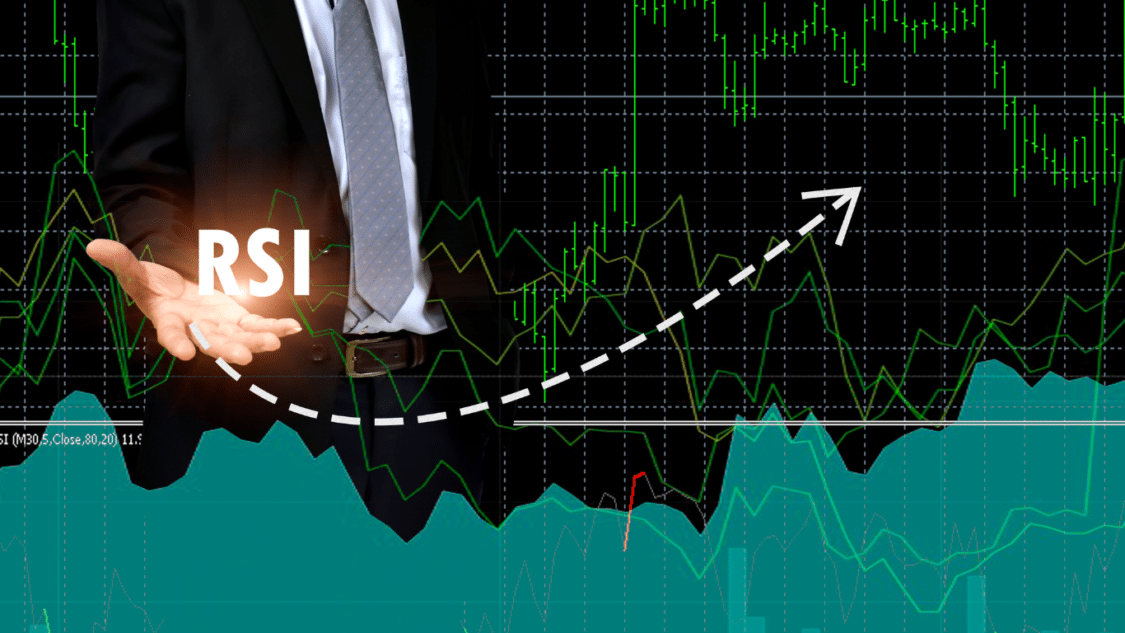Moving Average Convergence Divergence (MACD) is a famous technical analysis indicator that measures the relationship between two moving averages of an asset’s price. It is used to identify market trends and potential buying or selling opportunities. It is determined by subtracting the 26-day exponential moving average (EMA) from the 12-day EMA. The final product is plotted as a histogram and is referred to as the MACD line. A 9-day EMA of this line, the signal line, is also precise on the chart.
A bullish signal is indicated when the line crosses above the signal line, suggesting that the asset’s price is expected to increase. Conversely, when the Moving Average Convergence Divergence line crosses below the signal line, it indicates a bearish outlook and a potential decline in the asset’s price, indicating that the price may decrease or fall. Traders may also look for positive/negative divergences between the line and the asset’s price, indicating potential trend reversals.
In addition to the MACD and signal lines, the histogram is a third component of the Moving Average Convergence Divergence. The histogram displays the discrepancy between the moving average line and the signal line. If this line is higher than the signal line, the histogram will be positive, and if the line is lower than the signal line, the histogram will be negative. The height of the histogram bars can indicate the trend’s strength, with taller bars indicating stronger momentum.

How do you read a MACD chart?
To read this chart, you need to understand the three components of the indicator:
- MACD Line: Determining this line involves subtracting the 26-day exponential moving average (EMA) from the 12-day EMA of the asset’s price. A bullish trend is indicated when the line is positioned above the zero line, and a bearish trend is signalled when it is below the zero line.
- Signal Line: The signal line is derived by calculating the 9-day exponential moving average (EMA) of the MACD line. When this line crosses above the signal line, it shows a potential buying opportunity. When it crosses below the signal line, it is a signal for a possible selling opportunity.
- Histogram: The histogram illustrates their disparity by comparing the MACD and signal lines. Positive histogram bars indicate that the MACD line is above the signal line, and negative histogram bars indicate that the line is below the signal line. The height of the histogram bars indicates the strength of the trend.
Here’s a summary of how to interpret a MACD chart:
- Bullish trend: When the line is above the zero line, and the MACD signal line crosses the signal line, it signals a bullish trend and a potential buying opportunity.
- Bearish trend: When the moving average line is below the zero line, and this line crosses below the signal line, it signals a bearish trend and a potential selling opportunity.
- Trend reversal: A positive divergence between the moving average line and the asset’s price can indicate a potential trend change from bearish to bullish. Similarly, a negative divergence signals a potential trend reversal from bullish to bearish.
When making trading decisions, it’s important to use this with other technical and fundamental analysis tools and consider the overall market conditions and the particular asset’s historical price trends.

What does MACD mean in stocks?
Within the stock market, the Moving Average Convergence Divergence is a technical analysis indicator to ascertain a stock’s price’s momentum and trend direction. It measures the relationship between two moving averages of a stock’s price and plots the result as a histogram and a signal line.
A bullish signal is formed when the moving average line crosses past the signal line, indicating that the stock’s price will likely rise. A bearish signal is generated when the line crosses below the signal line, suggesting the price may fall. Furthermore, traders can examine positive or negative divergences between the moving average line and the stock’s price action, suggesting potential trend reversals.
Stock traders and investors widely use it in their technical analysis toolkits. It provides valuable information about a stock’s price trend and potential buying or selling opportunities. However, it’s important to note that it does not guarantee future price movements. Traders should use other technical and fundamental analysis tools hand in hand to make informed trading decisions.
Are there different variations or settings for the MACD indicator, and how do they impact its effectiveness?
Yes, there are several versions and settings for the Moving Average Convergence Divergence indicator, and they can affect its efficiency depending on the trader’s preferences and the market. Here are some of the possible variations.
Default Setting (12, 26, 9): The MACD indicator’s default settings include a 12-period EMA as the faster line, a 26-period EMA as the slower line, and a 9-period EMA as the signal line. This setup is commonly utilized and is an excellent starting point for many traders.
Shorter Timeframes: Traders can utilize the MACD indicator on shorter timeframes such as 5, 10, or 15 periods. Shorter periods can give more sensitive signals, allowing traders to profit from short-term market fluctuations.
Longer Timeframes: Longer timescales, such as 50, 100, or 200 periods, can, on the other hand, be employed for the MACD indicator. Longer durations can lower price volatility and create indications corresponding to long-term patterns.
Customized Settings: Traders can adjust the MACD indicator parameters to their trading techniques and preferences. Changing the number of periods for the faster and slower lines and the signal line may be necessary.
The variation for the MACD indicator is determined by the trader’s trading style, timeframes, and the market under consideration. Shorter settings can help capture short price swings and produce more frequent alerts, but longer settings can give a broader perspective on long-term patterns. Traders must experiment with various settings and undertake extensive backtesting to identify the best successful setup for their unique trading goals and preferences.
How to read MACD and RSI?
When analyzing stocks, traders commonly depend on the Relative Strength Index and the Moving Average Convergence Divergence as key technical analysis indicators, offering significant insights into the stock’s price trend and momentum. Here’s how to read these indicators:
- Moving Average Convergence Divergence: It measures the connection between two moving averages of a stock’s price and plots the result as a histogram and a signal line. When the moving average line surpasses the signal line, it generates a bullish signal, whereas a bearish signal is generated when the line crosses below the signal line. Traders need to observe any positive or negative divergences between the moving average line and the stock’s price, as they can provide insights into possible trend reversals.
- Relative Strength Index (RSI): The RSI measures the strength of a stock’s price action, with values ranging from 0 to 100. Values above 70 indicate overbought conditions, and values below 30 indicate oversold conditions. A bullish signal is generated when the RSI crosses above 50, and a bearish signal is generated when the RSI crosses below 50. Traders may also look for divergences between the RSI and the stock’s price action

What is the difference between MACD and RSI?
Both Moving Average Convergence Divergence and (RSI) Relative Strength Index are well-known technical indicators used extensively in stock market analysis. While they provide insights into price trends and potential buying or selling opportunities, their calculation methods and the information they convey differ.
- Calculation:
MACD: Is calculated by subtracting the longer-term exponential moving average (EMA) from the shorter-term EMA. The result is plotted as a line on the chart, a signal line (usually a 9-day EMA), and a histogram representing the difference between the two lines.
RSI: Is calculated based on the average gain and loss over a specified period (often 14 days). By evaluating the speed and extent of price movements, the RSI assigns a numeric value between 0 and 100, indicating the velocity and magnitude of the price changes. - Purpose:
MACD: Primarily identifies potential trend reversals and generates buy or sell signals. It focuses on the convergence and divergence of moving averages, indicating shifts in momentum and possible entry or exit points.
RSI: Is used to assess the strength and momentum of price movements. It helps identify overbought or oversold conditions in the market, indicating potential price reversals or corrections. - Interpretation:
MACD: Traders look for bullish (upward) or bearish (downward) crossovers between the MACD and signal lines. Additionally, the Moving Average Convergence Divergence histogram provides insights into the current trend’s strength.
RSI: Values above 70 are considered overbought, suggesting a potential price decline or correction. Conversely, RSI values below 30 indicate oversold conditions, suggesting a potential price increase or rebound. - Timeframes:
MACD: Is commonly used on longer timeframes (e.g., daily, weekly) to identify broader market trends and generate signals for longer-term positions.
RSI: Is often used on shorter timeframes (e.g., daily, hourly) to identify short-term overbought or oversold conditions and potential price reversals.

When reading the MACD and the RSI, it’s important to consider the overall market conditions and the particular stock’s historical price trends. Traders may also use additional technical and fundamental analysis tools with the two in order to make informed trading decisions.
This a versatile indicator that can provide helpful information about an asset’s price trend and potential turning points. Traders and investors commonly use it as part of their technical analysis toolkits.
In summary, the Moving Average Convergence Divergence provides valuable information about a stock’s price trend and momentum, while the RSI provides information about the stock’s price strength. By combining these two indicators, traders can get a more comprehensive picture of the stock’s market conditions and potential buying or selling opportunities.
In conclusion
Traders commonly trust the Moving Average Convergence Divergence and the Relative Strength Index (RSI) as essential technical analysis tools, offering valuable insights into stock market trends and potential trading opportunities. The MACD focuses on the relationship between moving averages and provides signals for trend reversals, while the RSI measures price strength and identifies overbought or oversold conditions. By combining these indicators, traders can gain a more comprehensive understanding of a stock’s market conditions and make informed decisions. However, it’s important to consider other analysis tools, market conditions, and historical price trends when using these indicators. Ultimately, these indicators serve as valuable resources within a trader’s toolkit, enhancing their ability to navigate the stock market effectively.




